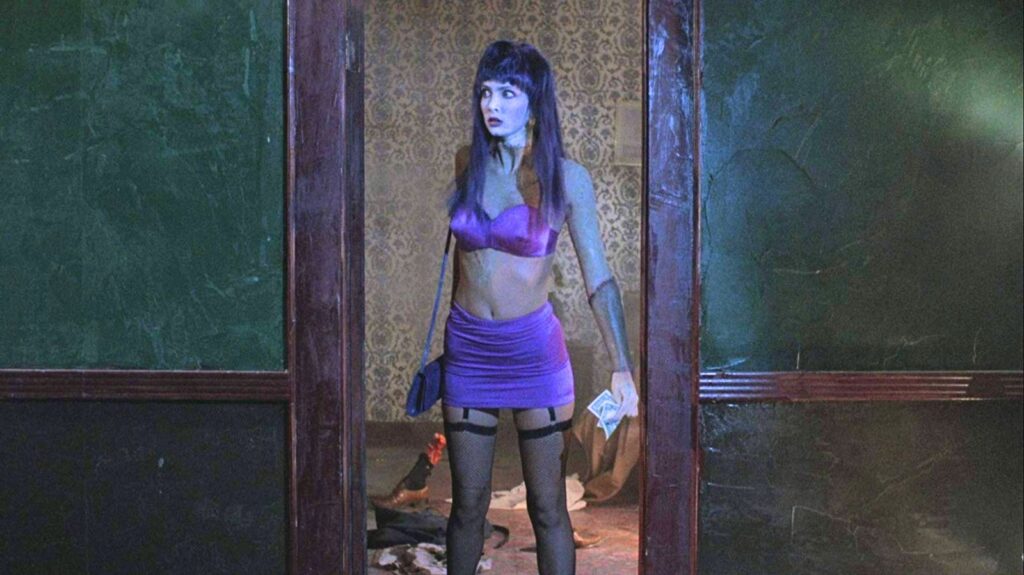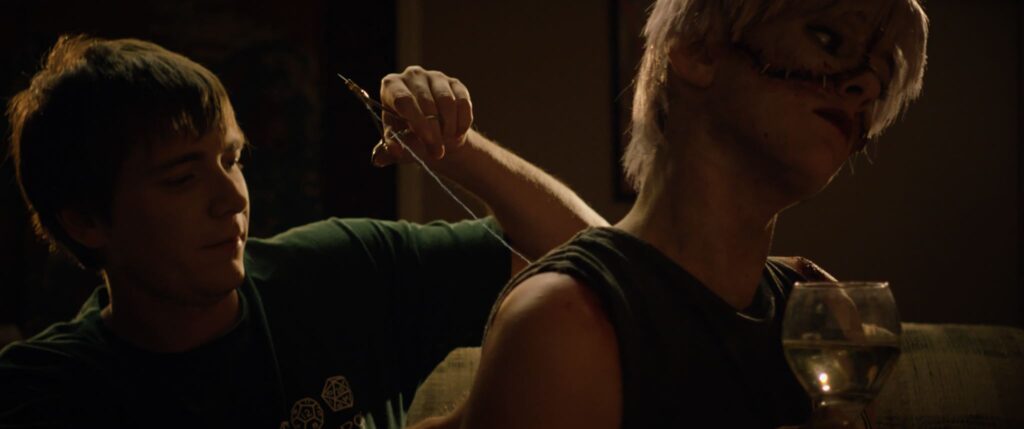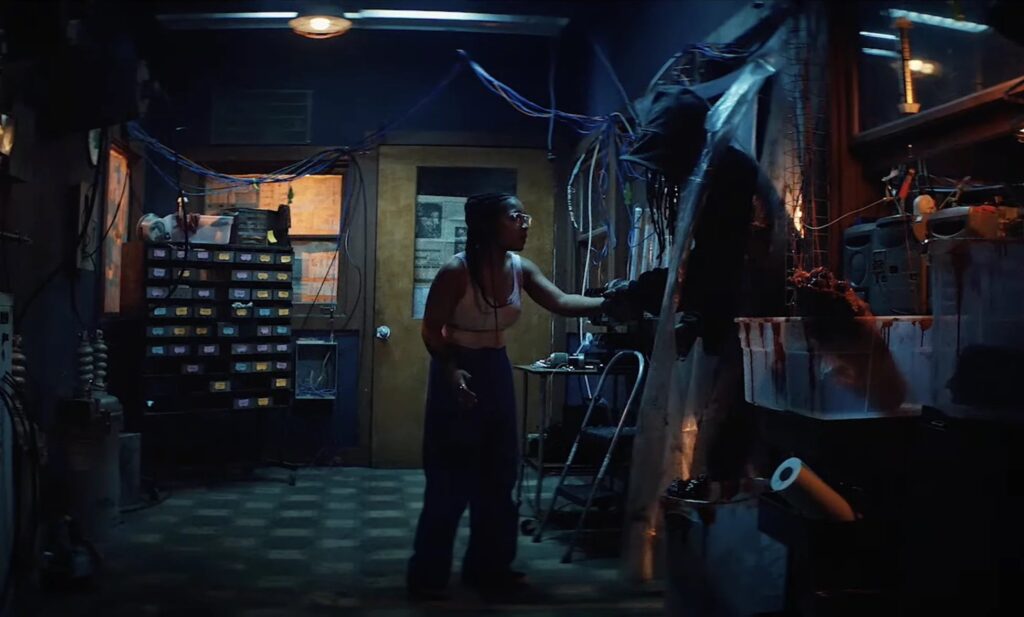SIGN UP TO OUR NEWSLETTER FOR DISCOUNTS, PROMOTIONS and PRIZES!
Madame Frankenstein – Exploring Monstrosity in Female Frankenstein Films

In Frankenstein or, The Modern Prometheus (1818), author Mary Shelley once wrote, “There is something at work in my soul, which I do not understand”. It is an undeniably beautiful quote reminiscent of the delicate nature of the soul that speaks to the fragileness within humanity; it paints pictures of pale pinks and cotton with its sweetness. However, just as nature pins the human form as sensitive and innocent, there is equally a brutality, a malevolence that seeps through the soft belly and permeates the soul with an air of monstrousness that is impossible to precisely identify – it is, as Shelley details, something which we do not understand.
This odd polarity has often been used in horror to analyse the female. She is mellow yet ferocious, harmless yet venomous. This dissection of the monstrous speaks to countless films from Carrie (1976) to Raw (2016), where the likes of female witches, vampires, aliens, possessed creatures and werewolves are ignited on their path of abjection. However, one entity has somewhat escaped the line of fire – the feminine mediation of Frankenstein.

Monsters represent what we can fantastically be and are most certainly not, almost akin to the folkloric nature of haunting mythology surrounding culturally specific warnings like the La Llorona tale originating from Latin America. It is the knowing that otherness is a potent potential that we simultaneously want to hide from whilst devouring its unique alienness. Regarding feminising Frankenstein, the focal topic is the female body and its all-controlling, all-consuming traits and how it affects otherness and others.
Tyler MacIntyre’s Patchwork (2015) follows three women, Jennifer (Tory Stopler), Ellie (Tracey Fairaway) and Madeleine (Maria Blasucci), who, after spending the night partying, find themselves butchered and reattached together. Similarly, Frank Henenlotter’s Frankenhooker (1990) sees widowed scientist Jeffrey (James Lorinz) bring his wife back to life by attaching the few remnants left of her corpse with random body parts from prostitutes that he murdered. Within both of these films, the unwillingly and unknowingly spliced and diced female corpse represents the act of objection, particularly concerning the womanly form being a commodity for desire.
Whilst Jeffrey’s motives seem slightly touching at first, the film makes a point of showing his self-fulfilling prophecies; for example, during one of his grief-ridden rambles where he has the lightbulb moment of Frankenstein-ing his wife Elizabeth (Patty Mullen), he comments that he will give her the best figure possible. Adding to this is his nonchalant attitude to the several sex workers he kills to compose the new body, as well as his frustration over Elizabeth seeking agency over her new form (which she never even asked for). Jeffrey is frustrated over his lack of control, with this anger slipping into pure vexation when the film ends with Elizabeth performing the same body reassembly on Jeffrey.
Here, Elizabeth is a vessel in which to be fascinated and fearful. There is no conforming to the norm. The ‘new’ Elizabeth was biologically constructed to be an object of desire for Jeffrey, something to stare at and admire. But, she becomes a source of fear and allure when she begins to reject and sway from her presumed destined stature. Within this corruption, a tie is formed between the spectacle and the feminised monster. We internalise the knowledge of Elizabeth being undead, a reanimated dead, rotting corpse and internalise this grotesqueness along with her refusal to comply and see her as the epitome of the monstrous feminine.

The physical threat of decay paired with the fragility of female morals is additionally explored in Patchwork. The triptych-like Frankenstein creature goes on a path of vengeance within the narrative. When looking at the prospect of monstrosity and revenge, an immediate connection is made, exhibiting a cathartic purge of vehemence and revolt. Like Elizabeth, the characters experience a bodily rebirth regarding their new forced physical form and spirituality. They reluctantly take on their flesh with a sense of fury, shedding their skin and disengaging from the agency of their mutilator. With this, they create a new identity.

Further elaborating this facet of new autonomy is the secondary strain of the female Frankenstein – the ‘actual’ Frankenstein. Of course, when the term ‘Frankenstein’ is correctly used, it refers to the creator of the monster (known as Dr. Victor Frankenstein in the book and original media), with his creation being deemed as ‘Frankenstein’s monster’. Nevertheless, it is precisely this idea of Frankenstein’s creator that we are going to explore next.

Womanly, mad scientists taking discarded corpses and creating their own twisted, semi-living sapient beings has been a significant area that the horror and thriller world has traversed. Films such as Lady Frankenstein (Mel Welles, 1971), Birth/Rebirth (Laura Moss, 2023), The Angry Black Girl and Her Monster (Bomani Story, 2023) and the upcoming Lisa Frankenstein (Zelda Williams, 2024) all employ the use of a female scientist. Although under different strains, these creators of monsters all act as makers of individuals, albeit not necessarily ‘traditional’ cognisant beings. They are motherly architects of horror.

In horror, the maternal figure is continuously seen as monstrous because of her perceived transgressions that defy social normalities, with the focus being on all of the bodily changes experienced during pregnancy, childbirth and the aftermath of rearing the child. As seen in The Brood (David Cronenberg, 1979) and the more contemporary film Titane (Julia Ducournau, 2021), horror cinema utilises these themes of the motherly body, castration anxiety and the threat of maternal domination to create apprehension and dread. The female Dr. Frankenstein spends their blood, sweat and tears creating, nurturing, and training their creations before unleashing them. These creatures are motherly-esque creations made in a symbolic womb (improvised labs). Herein lies the possibility that the femme creator of the beast is the catalyst for all things monstrous.

In essence, the trajectory of femininity within the concept of the female Frankenstein reveals a nuanced portrait of monstrosity that has the ability to be explored in an extremely wide capacity. Going back to the beginning, Shelley’s timeless quote, “There is something at work in my soul, which I do not understand”, condenses the intricate web of the female experience, oscillating between fragility and fury, purity and wickedness. Through the likes of Frankenhooker and Patchwork, the female form is moulded to form a site of manipulation perpetuated by their cruel creators, with the films showing their journey to take back the power over their bodies. The barbaric transformations the women go through speak to the rejection of their prescribed roles, ultimately leading to an uproar.
On the other hand, we have the portrayal of the mother monster that blurs the complicated line between motherhood and monstrosity. Despite their nurturing intentions, these figures challenge and invoke fear through insubordination towards their traditional role. The female Frankenstein underscores the duality of beauty and brutality. It serves as a stringent cue of the complex and innate struggle to gain autonomy and agency in a world that seeks to confine.
Want more top horror lists and reviews? Check out our blog here..
Share this story

